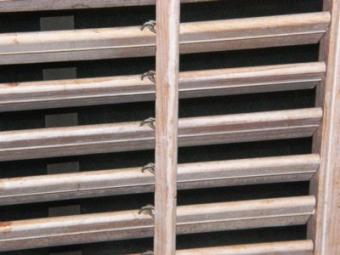
Employing epoxy wood filler to refurbish a windowsill or rehabilitate a wood floor is one way to help preserve the aesthetics of your home or save yourself an expensive repair. Wood can deteriorate over time due to the action of moisture, insects or fungal activity and epoxy wood filler can be an effective way to save and fortify your fine woods.
Preserving Wood Surfaces With Epoxy
Epoxy wood filler is a blended product that replaces and strengthens wood fibers. It can be used to reinforce a window frame or fill a hole in a wooden board, floor or furniture. It's usually a permanent repair that can leave wood stronger than it was when it was new, and it's a much cheaper fix than replacing wood that's been undermined by years of wear or neglect. One area where wood fillers shines is for in-place fixes, where you don't want to dismantle an installation in order to fix a single board. It's usually applied as malleable putty and left in place to dry. Then the project is sanded.
Types of Epoxy Wood Filler
Some wood fillers are better for structural repairs, while others are easier and more attractive for cosmetic fixes. No epoxy wood filler is all things to all projects. Read the labels carefully for the wood filler you have in mind. There are a number of specialized varieties out there. A couple of major differences involve the way the filler is prepped.
Cellulose-Based Fillers
This type of product uses wood fibers with a bonding, coloring and wetting agent. You can find it as a dry mix that you typically prepare with water. This is a variety that's been around for years and is pretty versatile because you only mix as much as you need, and the dry base has a long shelf life. If you need wood filler for lots of small jobs, it's an economical and convenient way to go.
One drawback is that the water that helps to create a workable paste can take longer to dry than some other preparations. Depending on the job, this can be a significant problem.
Petroleum-Based Fillers
The second type of cellulose-based filler uses a petroleum based distillate instead of water to create a putty and comes pre-blended and ready to go. For a one-shot project, it's fast, but usually slightly more expensive than a dry mix. It's convenient to use, but tends to dry out if left sitting on the shelf too long.
Specialty and Make-It-Yourself Fillers
There's a third type of filler that deserves a mention here too, a heavy-duty resin that's designed to be weight bearing and is used for structural applications. Typically, most conventional DIY style epoxy wood filler is cosmetic. These are designer mixes blended by professionals to meet specific needs too. They use wood shavings, glue, shellac, linseed oil, resin, hardeners and other products.
The advantage of these preparations is that they can mimic the texture, color and hardness of your project better than some of the prepared stuff, but making them is a practice usually left to the pros unless all you're after is a simple filler made up of sawdust and white glue.
Choose the Right Epoxy Wood Filler and Get Busy
Consider your needs and choose the type of epoxy filler that will help you get the job done. Be sure to read the product directions carefully if you use a commercial mix, or consult a professional before you attempt to make your own filler mix. This will help you make repairs that will last.







